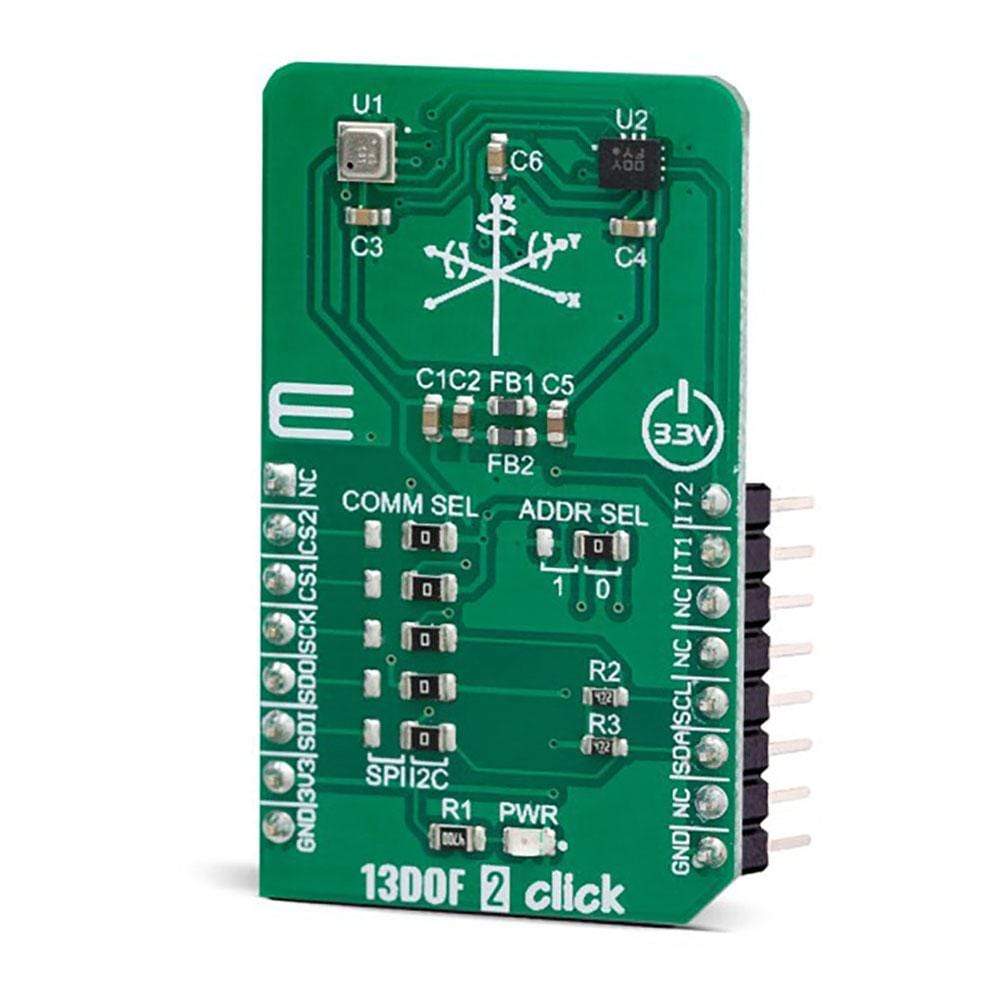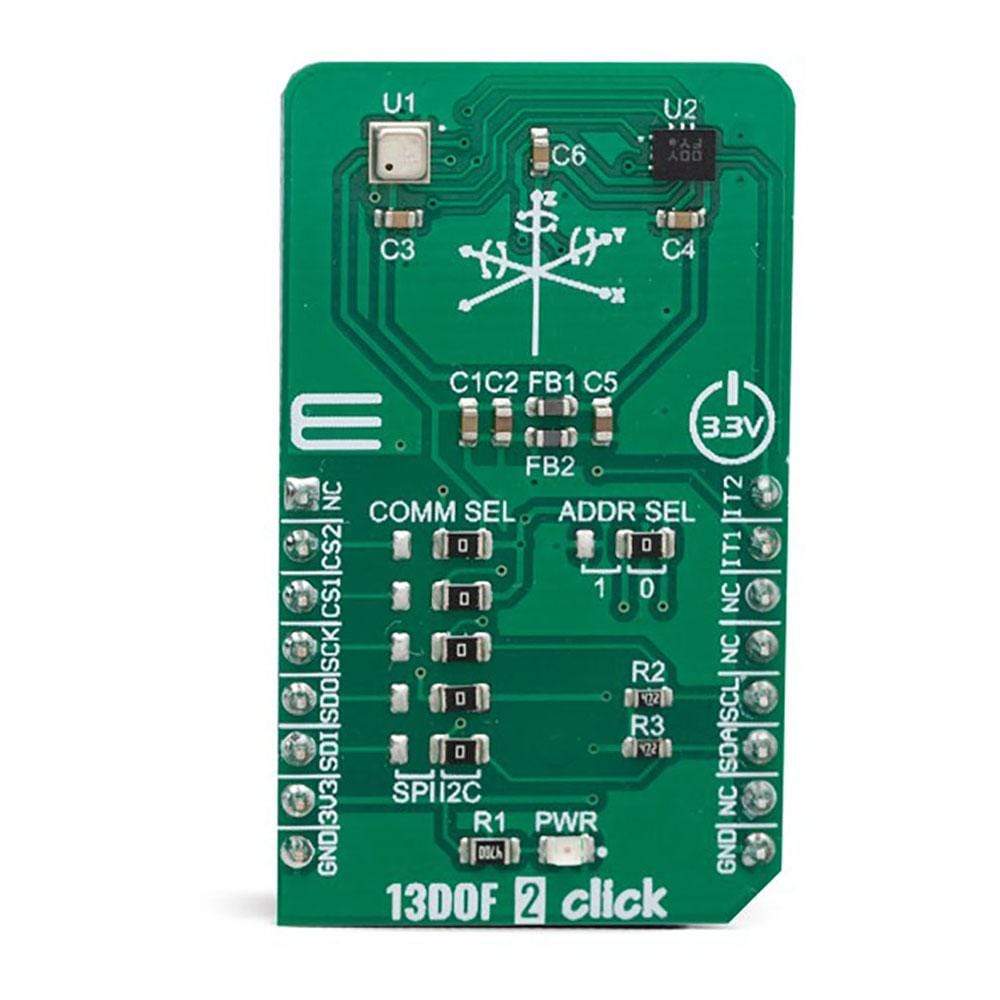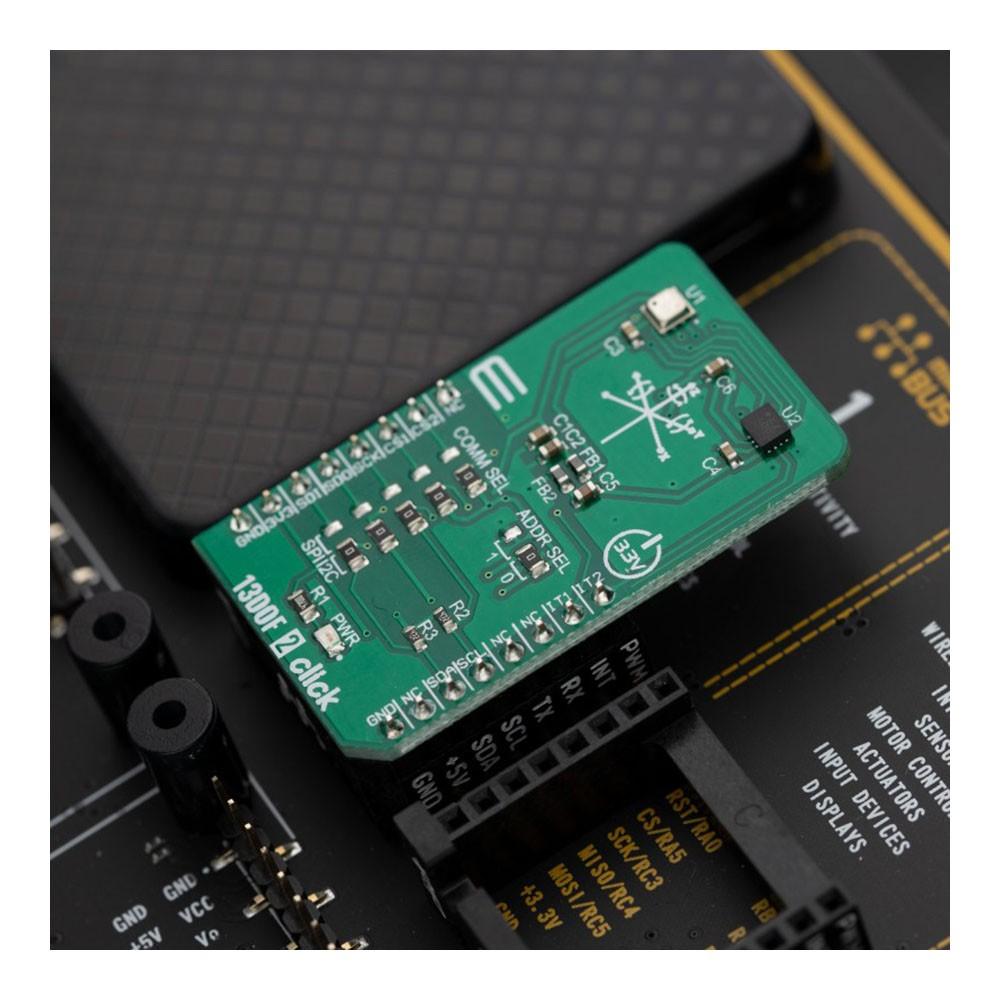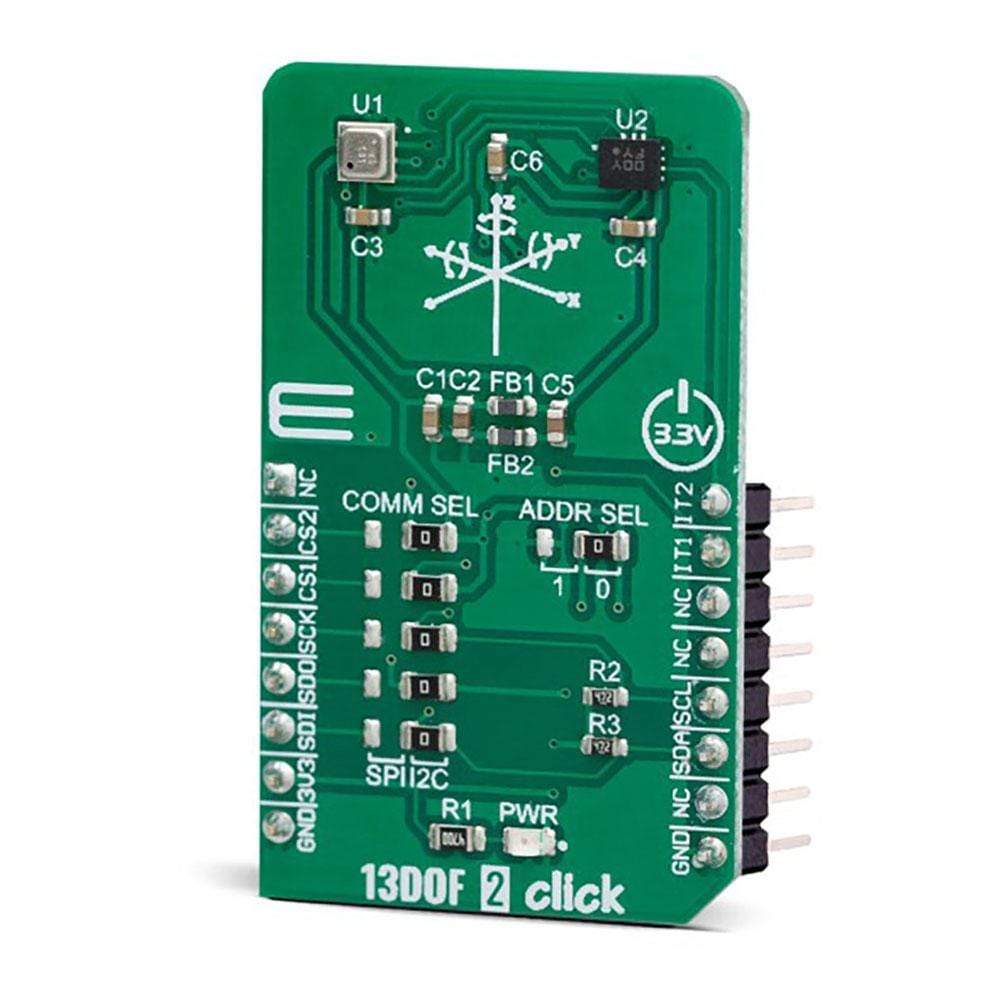
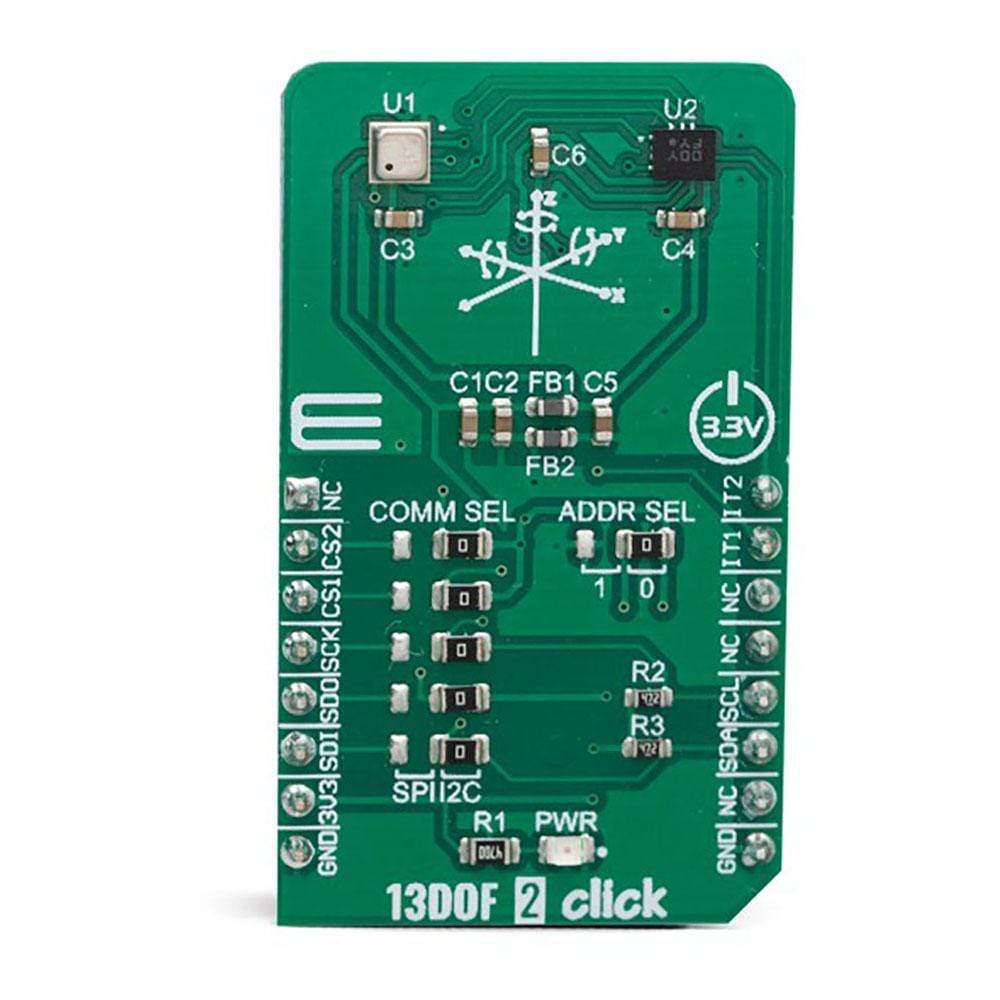
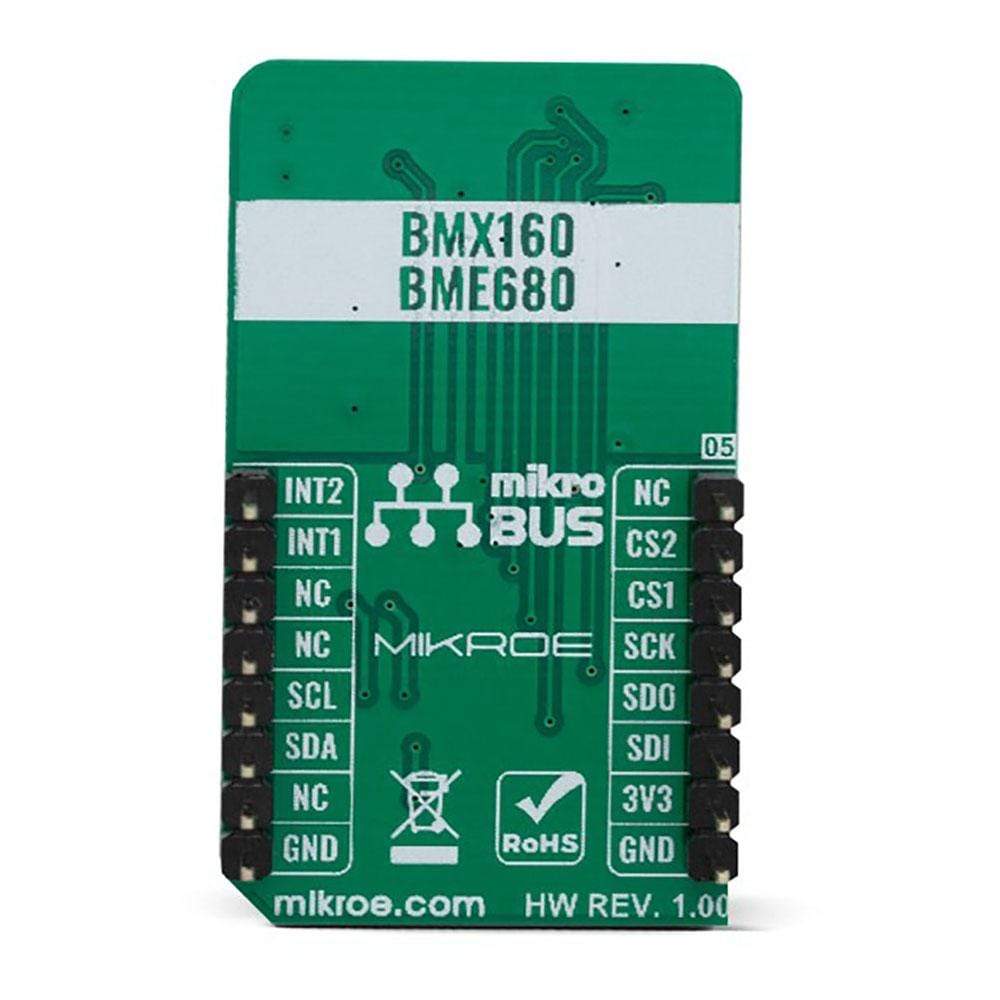
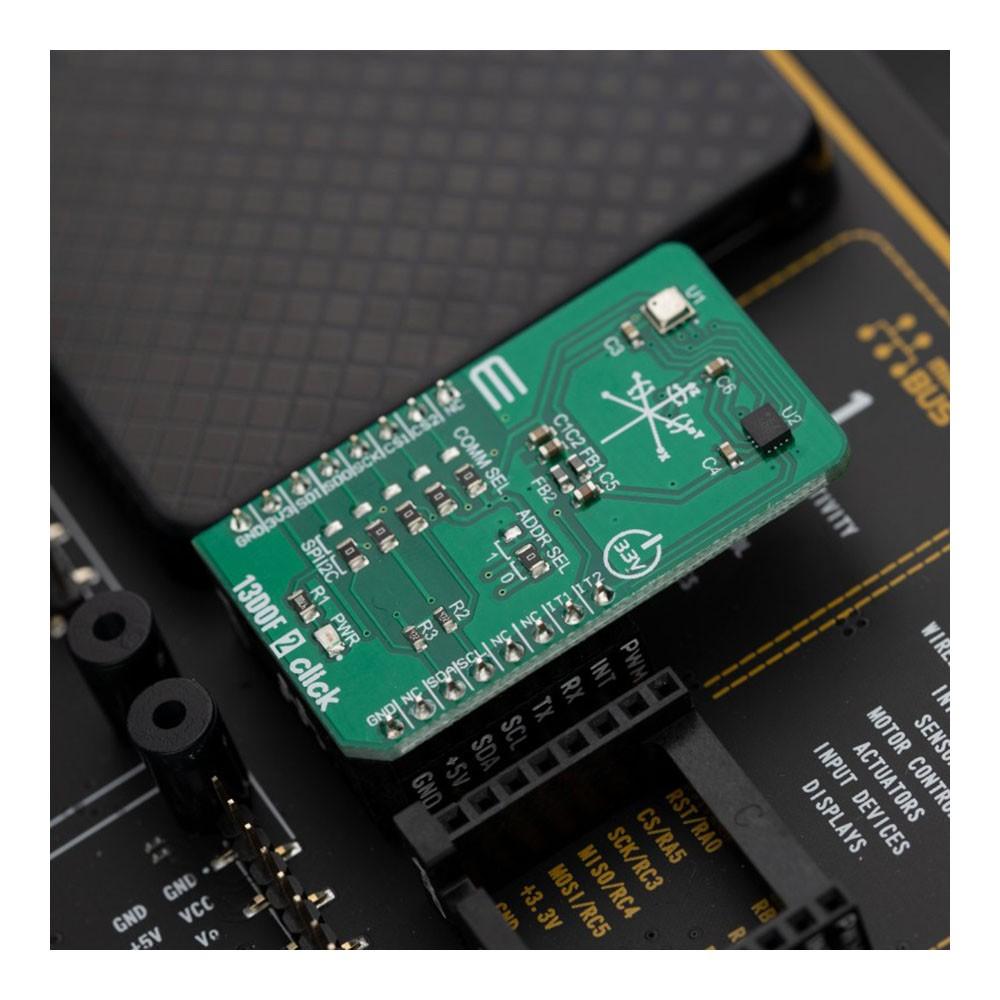
Key Features
Overview
Looking for an advanced motion tracking solution? Dive into the exceptional features of the 13DOF 2 Click Board that make it stand out in the market!
Equipped with cutting-edge sensors, the 13DOF 2 Click Board offers an impressive 13-axis motion tracking capability. Featuring the BME680 sensor for VOCs, humidity, pressure, and temperature measurements, paired with the BMX160 sensor comprising a 9-axis accelerometer, gyroscope, and geomagnetic sensor, this board is designed to meet the demands of immersive gaming and navigation applications.
- Accurately tracks up to 13 different axes, providing precise data for various applications.
- Supported by a mikroSDK compliant library, simplifying software development and integration.
Not just limited to gaming and navigation, the 13DOF 2 Click Board is versatile enough to be integrated into mobile phones, tablet PCs, GPS systems, smartwatches, sport and fitness devices, and more. Its functionality extends across multiple domains, making it a valuable addition to diverse projects.
Whether you are a tech enthusiast, a developer, or a hobbyist, the 13DOF 2 Click Board offers a seamless user experience, ensuring that you can leverage its advanced features without any hassle. Dive into the world of enhanced motion tracking with this exceptional Click Board.
Get your hands on the 13DOF 2 Click Board today and unlock a world of possibilities in motion tracking technology. Upgrade your projects and devices with the precision and reliability offered by this innovative Click Board.
Downloads
Vous recherchez une solution de suivi de mouvement avancée ? Découvrez les fonctionnalités exceptionnelles du 13DOF 2 Click Board qui le distinguent sur le marché !
Équipée de capteurs de pointe, la carte 13DOF 2 Click offre une impressionnante capacité de suivi de mouvement sur 13 axes. Dotée du capteur BME680 pour les mesures de COV, d'humidité, de pression et de température, associé au capteur BMX160 comprenant un accéléromètre à 9 axes, un gyroscope et un capteur géomagnétique, cette carte est conçue pour répondre aux exigences des applications de jeu et de navigation immersives.
- Suivi précis jusqu'à 13 axes différents, fournissant des données précises pour diverses applications.
- Pris en charge par une bibliothèque compatible mikroSDK, simplifiant le développement et l'intégration de logiciels.
Le 13DOF 2 Click Board ne se limite pas aux jeux et à la navigation, il est suffisamment polyvalent pour être intégré aux téléphones portables, tablettes PC, systèmes GPS, montres connectées, appareils de sport et de fitness, etc. Ses fonctionnalités s'étendent à plusieurs domaines, ce qui en fait un ajout précieux à divers projets.
Que vous soyez un passionné de technologie, un développeur ou un amateur, le Click Board 13DOF 2 offre une expérience utilisateur fluide, vous permettant de tirer parti de ses fonctionnalités avancées sans aucun problème. Plongez dans le monde du suivi de mouvement amélioré avec ce Click Board exceptionnel.
Procurez-vous dès aujourd'hui le Click Board 13DOF 2 et découvrez un monde de possibilités en matière de technologie de suivi de mouvement. Améliorez vos projets et vos appareils grâce à la précision et à la fiabilité offertes par ce Click Board innovant.
| General Information | |
|---|---|
Part Number (SKU) |
MIKROE-3687
|
Manufacturer |
|
| Physical and Mechanical | |
Weight |
0.018 kg
|
| Other | |
Country of Origin |
|
HS Code Customs Tariff code
|
|
EAN |
8606018716586
|
Warranty |
|
Frequently Asked Questions
Have a Question?
Be the first to ask a question about this.

